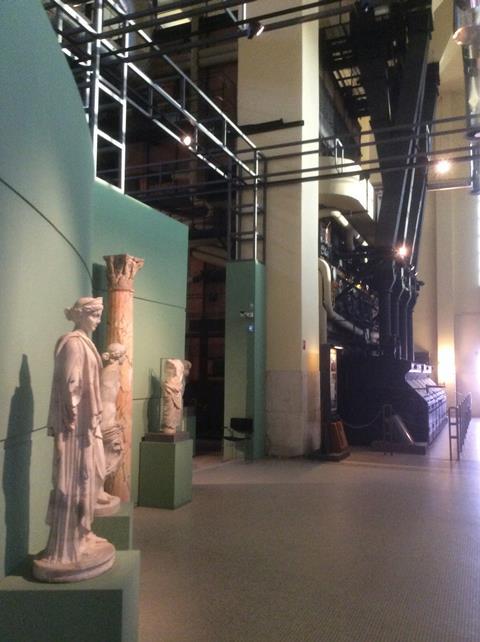As backdrops for art, the Wapping Project could hardly be more different from Albertopolis, says Gillian Darley

From Bethnal Green to Bombay, from the 1870s to the 1920s, the architecture of museum buildings was guided by what seemed appropriate to their then purpose and site.
In the former case, an industrial flatpack from Albertopolis in South Kensington re-emerged 15 years later as a purpose-built museum on a new site. The Indo-Saracenic design of the Prince of Wales Museum in Bombay offered at least a half-nod to the aesthetic styles of the subcontinent seen through colonial spectacles. Meanwhile, Alfred Waterhouse’s Natural History Museum in South Kensington took the argument to the extreme. Vertebra ornamented the rib vaults and every corbel represented an aspect of the animal kingdom.
In contrast, contemporary purpose-built museums are display cases for their architects. Perhaps Daniel Libeskind’s (initially empty) Jewish Museum in Berlin was the most honest.
Yet, as if to escape all the noise, museums have ridden to the rescue of building types that have fallen out of use due to changes in everything from technology to custom. It is there that we must look for some of the strongest, sharpest and most resilient displays around.
Recently in Rome I visited Centrale Montemartini, an outstation of the pair of Capitoline Museums which face one another across Michelangelo’s mesmerising piazza on the Campidoglio.

With reorganisation, an immense quantity of superb classical statuary was surplus to the displays and so, well south of the city in the Ostiense Marconi area, the city’s first public electricity plant gained a new purpose and became a destination for the determined visitor from the late 1990s onwards. Its giant halls and statuary set against the banks and towers of machinery (take note of what might have been, Tate Modern!) combine forces to breath-taking effect. Continually a work in progress, the building, machinery and artefacts stand in dramatic juxtaposition with one another.
By inverting the notion of “suitable” museum buildings, and collections, options appear. At Roubaix, in depressed northern France, an exuberant art deco public swimming pool became La Piscine, a kind of Roman villa in which the waters are encircled by 19th- and early 20th-century statues which tend to the heroic and demonstrative tastes of the time. The original scheme has proved such a run-away success that the architect, Jean Paul Philippon, recently returned to convert the shell of an adjacent mill to a much larger museum of decorative arts and industry, all of which reopened this autumn.
In London, Wapping Hydraulic Power Station was a brave attempt by the late Jules Wright, whose background had been in theatre, to combine industrial archaeology and the arts, including site-specific installations, including flooding the darkened space to dramatic and unforgettable effect. For 13 years the Wapping Project successfully flourished in the power station, machinery and all, until neighbourhood disputes caused it to close. Although the name and the work live on, the building itself has stood empty since 2013.
These functional buildings cannot be easily fine-tuned for conservation-standard display since light or temperature control is out of the question. Yet the spaces, and very often the fittings, can be attuned to display and activity that would be unthinkable in established museums and galleries, often with huge reserve collections unseen. Such disused buildings up and down the country, where budgets have shrunk and often ambitions with them, can offer new directions and engagement with a far wider audience. The buildings may have lost their original purpose but while they stand and when people are brave, the future is bright.
















No comments yet